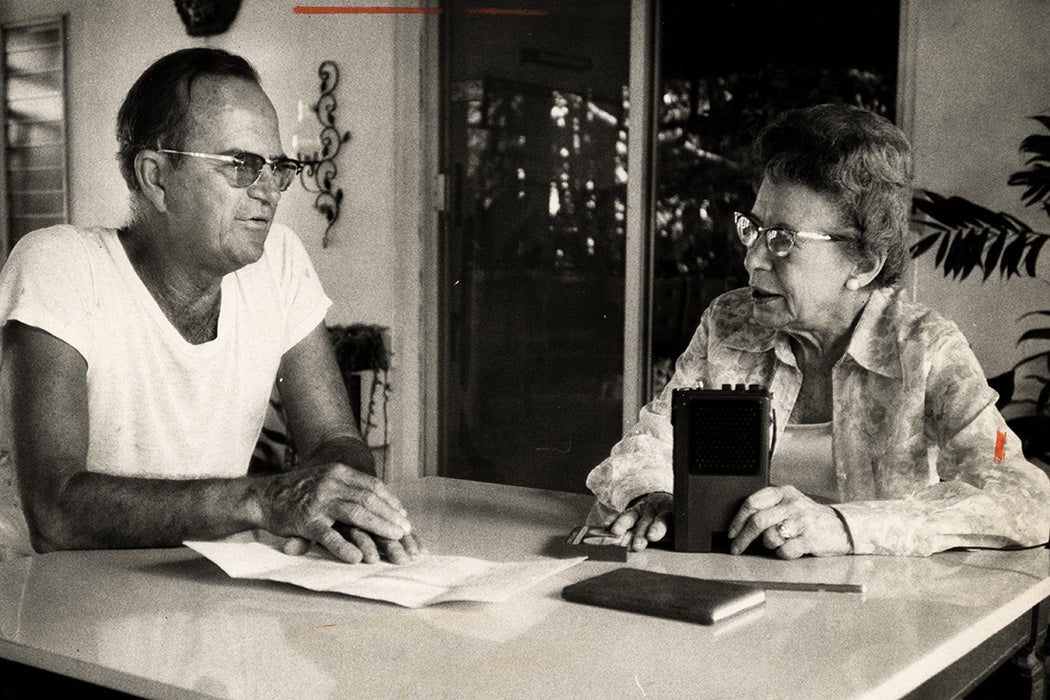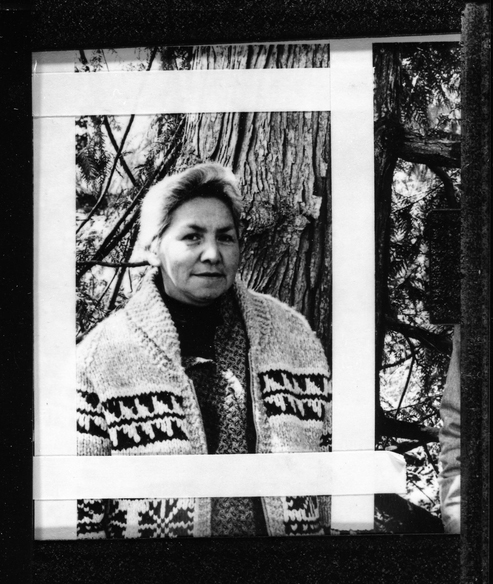Oral Histories
Another beneficial way to add voices and context to audio narratives is to utilize oral history recordings. One of the advantages of working with oral history material is that it provides a contrast to the commonly accepted historical record by engaging with people outside of the academic community.

The practice of oral history initiatives in the United States was first popularized by the Federal Writers Project as a part of the Works Progress Administration in the 1930s and 40s. The first oral history office was created by Allan Nevins at Columbia University in 1948 but the key factor in the expansion of oral history initiatives was the refinement and affordability of portable tape machines. This happened to coincide with an academic interest in social history in the 1960s and 70s and a proliferation of centennial celebrations across the US that inspired oral history initiatives to document the lives of residents who lived through the turn of the century. Digital recording devices, smartphones and the internet have developed the medium farther, allowing remote interviews and community driven initiatives.
As the Digital Initiatives Librarian, one of the things I focus on is transcribing our own oral history recordings and creating subject tags so researchers can keyword search and make connections between material, whereas listening through audio linearly for material that may or may not be in a recording has previously made this material a little daunting to researchers.
Mary Hillaire
To provide an example of an audio narrative I worked on where oral history recordings were key was a piece called Mary Hillaire and the Lummi Nation: Self Determination. The digital exhibit (which has some corruptions in it since it was originally created) and half hour long audio version that I created detail the life of Coast Salish Lummi and adult higher education reformer Mary Hillaire through the dictaphone tapes she prolifically recorded during Hillaire’s tenure at Evergreen State College between 1971 to her passing in 1982.

The archival collection, which consists of a mountain of 2142 audio cassettes was extremely daunting for archivists to work through–recording quality was often very low, sometimes the dictaphone was placed on surfaces that were prone to distortion and Hillaire’s oratory style, as she monologues in satellite class rooms on reservations across the Olympia, recapped her day and even recorded phone conversations, could be difficult to follow at times. Through sampling different areas of the tapes over time, conducting contemporary interviews with people that worked with Hillaire and composing a simple soundtrack using the clicks and pops of the tapes themselves, I created an audio narrative that paints a necessarily complicated portrait of a reformer that was perpetually at odds both with her largely White, supposedly progressive administration and her Indigenous community, who made Hilliare feel that she had compromised her values by working inside the institution.
Here is an example of how you can create a dialogue within a narrative using multiple oral history recordings and the weight and authenticity that comes from having a research subject relay their own words that quoting on paper just can’t.
Resources and Directories
A few different places to locate oral history material:
- Searching our audio material at the U of I
- Many Paths Many Voices, University of Washington digital collection
- Audio material at the Internet Archive
- Digital Public Library of America
- Collection of nationwide digital collections
- Calisphere
- Collection of California state collections
- American Folklife Center at the Library of Congress
- Columbia Center for Oral History
- Densho Digital Repository
- Focus on Japanese American Experience
- Oral History Association Directory of Centers and Collections
Note: If you can’t find what you are looking for in these collections, remember that the vast majority of all archival material has not been digitized and made publicly available. Search our special collections using this Archives West database. If you do find something of interest, reach out to the very talented folks in Special Collections at libspec@uidaho.edu, who can arrange an appointment in our reading room where you can listen through the audio material.
✺